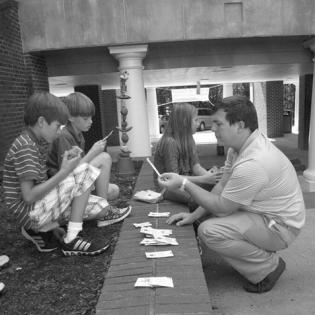Philanthropy or Kindness?
Many people have a difficult time distinguishing between acts of kindness and acts of philanthropy. Using the definition of philanthropy from the “Defining Philanthropy” lesson, youth will examine various situations and decide which ones are acts of philanthropy. They may discover that empathy is at the heart of both actions.
Author: Urban EdVenture Faculty
The learners will
distinguish between acts of philanthropy and acts of kindness.
- A virtual polling app such as sli.do or poll everywhere
- Facilitator-created scenarios of kind and philanthropic acts (see Teacher Prep below)
- Identify a definition of kindness to distinguish it from philanthropy. Utilizing this kindness definition and the definition of philanthropy developed by the group in the last lesson, create a list of scenarios for youth to categorize as acts of philanthropy or acts of kindness (philanthropy benefits the larger community/common good rather than being friendly or nice to individuals).
- Create a “Philanthropy vs. Kindness” list of scenarios on a virtual platform, such as sli.do [https://www.sli.do/]. Examples of scenarios: Helping younger students with math homework after school; listening to a friend who is upset; serving a meal at the Women’s Shelter; smiling at people in the hall; and giving a hot cup of coffee to a homeless man you pass regularly on the street.
Philanthropy, kindness
Do a “write and share” by writing a reflection based on the following prompts and sharing the reflection in class discussion: What philanthropic efforts have you seen or been involved in before? How did this effort benefit the community? In what way are kindness and philanthropy similar?
A Word About Reflection: Reflection may take the form of a whole class discussion, asking for volunteers to share after completing a reflection, or keeping written reflections private. The type of reflection can depend on several factors, including the time left after other activities are completed, the tone of the class, how personal the reflection topic may be, and how strong the class bond is.
- Payton, Robert L. and Moody, Michael P. "Voluntary Action For The Public Good.” Understanding Philanthropy: Its Meaning and Mission, chapter 1. Bloomington: Indiana University Press, 2008.
- Poll everywhere audience interaction / response app available at https://www.polleverywhere.com/
- Sli.do audience interaction / response app available at https://app.sli.do
Instructions
Display the list of scenarios you have developed and have participants indicate (virtually) which they think are examples of acts of philanthropy and which are examples of acts of kindness.
Share the poll results. Here the sli.do or poll everywhere tools are most useful since they provide immediate results for the participants to see. Discuss whether there is universal agreement and talk about the gray areas.
Share the definition of kindness you selected. Then ask them to recall the definition of philanthropy you’ve chosen to use for the course.
Emphasize the component of the definition that extends acts of philanthropy beyond the individual. In their book Understanding Philanthropy, Payton and Moody discuss at length the significance of philanthropy being action taken “for the public good,” but it is sufficient to help students understand that a community of individuals will benefit from philanthropic actions and, by extension, society as a whole benefits. A defining difference between philanthropy and kindness is who benefits.
They may look at the list of scenarios again and make their selections again.
Discuss the poll results. Are the results different than those of the first vote? Is there universal agreement? There will likely be some examples that could be argued either way, such as, “adopting a dog from an animal shelter.” In this example, one can arue this benefits society as a whole by reducing the burden that unwanted pets and stray animals place on a community.
Do a “write and share” by writing a reflection based on the following prompts and sharing the reflection in class discussion: What philanthropic efforts have you seen or been involved in before? How did this effort benefit the community? In what way are kindness and philanthropy similar?
